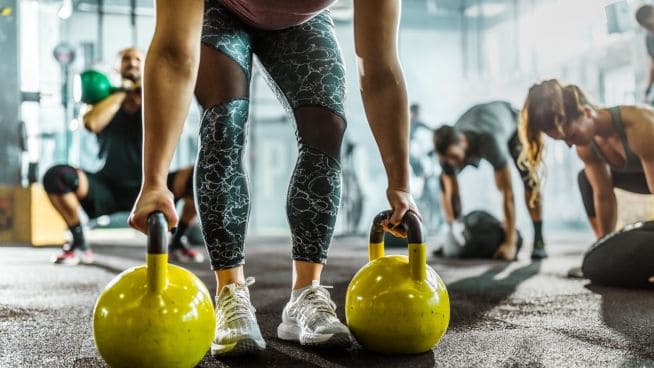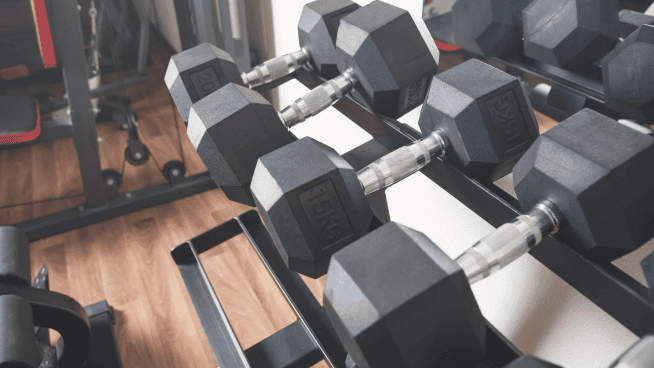The Fastest Way to Boost Your Fitness!
If you’re looking to kickstart your fitness journey or break through a plateau, the good news is that you don’t need years to see results. With the right approach, you can boost your fitness quickly—sometimes in as little as a few weeks.
The fastest way to boost fitness is not necessarily about doing more. The integration of training, rest, and nutrition gets you to the next level.
1. Prioritize High-Intensity Interval Training (HIIT)
When it comes to rapid fitness gains, few methods beat High-Intensity Interval Training (HIIT). HIIT involves short bursts of all-out effort followed by brief rest periods. For example, sprinting for 30 seconds, then walking for 60 seconds, repeated for 15-20 minutes. Studies show that HIIT can improve cardiovascular fitness, burn fat, boost testosterone, and build endurance faster than steady-state cardio, such as jogging for an hour.
Why it works: HIIT spikes your heart rate and taxes multiple energy systems, forcing your body to adapt quickly. It also triggers the “afterburn effect” (Excess Post-Exercise Oxygen Consumption, or EPOC), where you burn calories even after the workout ends. Start with 2-3 weekly sessions, keeping them short but intense—a sample workout: 8 rounds of 20-second burpees with 40-second rests.
2. Lift Heavy with Compound Movements
Strength training is non-negotiable if you want fast fitness gains. Focus on compound lifts—exercises that work for multiple muscle groups at once—like squats, deadlifts, bench presses, and pull-ups. These moves build strength, muscle, and coordination in less time than isolation exercises (e.g., bicep curls).
Aim to lift heavy weights at 70-85% of your one-rep max for 4-6 reps per set. This range optimizes strength and muscle growth without requiring endless gym hours. Schedule 3-4 sessions weekly, targeting all major muscle groups. Progressive overload—gradually increasing weight or reps—is key to rapid improvement. In just 4-6 weeks, you’ll notice significant boosts in power and stamina.
3. Optimize Your Nutrition
Exercise alone won’t cut it; nutrition is the fuel for your fitness engine. To see quick results, prioritize protein—aim for 0.8-1 gram per pound of body weight daily (e.g., 120-150g for a 150-pound person). Protein repairs muscle damage from workouts, speeding recovery and growth. Sources like chicken, eggs, fish, tofu, or whey protein shakes are ideal.
Next, time your carbs wisely. Eat complex carbs (oats, sweet potatoes, quinoa) 1-2 hours before workouts for energy and simple carbs (fruit, white rice) post-workout to replenish glycogen stores. Keep fats moderate—20-30% of daily calories—from nuts, avocados, or olive oil. Hydration is critical, too; drink 2-3 liters of water daily to support performance and recovery. Cut processed junk—sodas, chips, pastries—to avoid energy crashes and inflammation.
4. Master the Art of Recovery
Pushing hard without recovering is a recipe for burnout or injury. Sleep is your secret weapon: aim for 7-9 hours nightly. During sleep, your body releases growth hormones, repairs tissues, and consolidates fitness gains. A 2021 study found that even one night of poor sleep can reduce strength and endurance the next day.
Active recovery—like light stretching, yoga, or a 20-minute walk—on rest days boosts blood flow and reduces soreness. Foam rolling or massage guns can also speed up muscle repair. Limit stress, too; chronic cortisol spikes from overwork or anxiety sabotage fitness progress. You’ll feel stronger and more energized in 2-3 weeks of solid recovery habits.
5. Leverage the Power of Consistency
Fitness doesn’t improve overnight, but consistency accelerates results. Commit to a 4-week plan: 3-4 workouts weekly, balanced meals, and solid sleep. Track your progress—log weights lifted, workout times, or how you feel—to stay motivated. Even small wins, like adding 10 pounds to your squat or shaving 10 seconds off a mile, compound quickly.
Avoid the trap of overtraining. More isn’t always better; 45-60 minutes per session is plenty if you’re focused. Rest days aren’t lazy—they’re when your body rebuilds. Stick to the plan, and by week four, you’ll see measurable jumps in strength, endurance, or body composition.
6. Hack Your Mindset
Mental grit drives physical gains. Set clear, short-term goals: “Run a 5K in under 25 minutes” or “Deadlift my body weight” within a month. Visualize success—studies show mental imagery enhances performance. When workouts get tough, focus on the next rep, not the whole session.
Ditch perfectionism. Missing one workout or eating a donut won’t derail you—quitting will. Reframe setbacks as data: if you’re stalled, tweak something (more rest, fewer carbs). A strong mindset turns a 30-day effort into lifelong habits.
7. Use Supersets and Circuits for Efficiency
Short on time? Supersets (pairing two exercises back-to-backs, like push-ups and rows) and circuits (cycling through 3-5 moves with minimal rest) skyrocket workout density. They blend strength and cardio, torching calories while building muscle. Try this: 10 squats, 10 push-ups, 10 lunges, rest 60 seconds, repeat 4 times. In 20 minutes, you’ve hit every muscle and spiked your heart rate.
These methods also fight boredom, keeping you engaged. Swap them into your routine 1-2 times weekly for a quick fitness jolt.
8. Test and Tweak with Metrics
Measure your baseline—max push-ups, mile time, or squat weight—then retest every 2 weeks. Data shows what’s working. If endurance lags, add more HIIT. If strength plateaus, increase lifting volume—apps like Strava, MyFitnessPal, or a simple notebook work fine. Adjustments based on real feedback cut wasted effort and fast-track progress.
The 30-Day Challenge
Here’s a sample plan to tie it all together:
- Monday: HIIT (sprints, burpees, etc., 15-20 min)
- Tuesday: Strength (squats, bench press, rows; 4 sets of 5 reps)
- Wednesday: Active recovery- low intensity (walking). Do something.
- Thursday: HIIT (jump squats, mountain climbers; 15-20 min)
- Friday: Strength (deadlifts, pull-ups, overhead press; 4 sets of 5)
- Saturday: Active recovery- low intensity (walking). Do something.
- Sunday: Rest
- Nutrition: 3 meals + 1-2 snacks, high protein, carb-timed, moderate fats.
- Sleep: 7-9 hours, no screens 1 hour before bed.
In 30 days, you could gain 5% strength, drop a pants size, or run faster than ever. Results vary, but the system doesn’t—intensity, consistency, and recovery are universal.
Final Thoughts
Boosting your fitness fast isn’t about shortcuts but consistency and efficiency. HIIT and heavy lifting spark rapid physical changes. Nutrition and sleep amplify them. Mindset and tracking keep you on course. Your fitter self is closer than you think.
The book Eat to Win will teach you how to eat healthily and show you exactly what to eat for breakfast, lunch, and dinner for weeks.
Check out my book Instant Strength to boost strength, speed, power, and agility.
Also, look for my book Balanced Body, which explains how to enhance flexibility, stability, and mobility.
In addition, watch my YouTube channel, Balanced Body, for fitness, HIIT, sports, and training workouts, tips, and strategies.
RECOMMENDED FOR YOU
MOST POPULAR
The Fastest Way to Boost Your Fitness!
If you’re looking to kickstart your fitness journey or break through a plateau, the good news is that you don’t need years to see results. With the right approach, you can boost your fitness quickly—sometimes in as little as a few weeks.
The fastest way to boost fitness is not necessarily about doing more. The integration of training, rest, and nutrition gets you to the next level.
1. Prioritize High-Intensity Interval Training (HIIT)
When it comes to rapid fitness gains, few methods beat High-Intensity Interval Training (HIIT). HIIT involves short bursts of all-out effort followed by brief rest periods. For example, sprinting for 30 seconds, then walking for 60 seconds, repeated for 15-20 minutes. Studies show that HIIT can improve cardiovascular fitness, burn fat, boost testosterone, and build endurance faster than steady-state cardio, such as jogging for an hour.
Why it works: HIIT spikes your heart rate and taxes multiple energy systems, forcing your body to adapt quickly. It also triggers the “afterburn effect” (Excess Post-Exercise Oxygen Consumption, or EPOC), where you burn calories even after the workout ends. Start with 2-3 weekly sessions, keeping them short but intense—a sample workout: 8 rounds of 20-second burpees with 40-second rests.
2. Lift Heavy with Compound Movements
Strength training is non-negotiable if you want fast fitness gains. Focus on compound lifts—exercises that work for multiple muscle groups at once—like squats, deadlifts, bench presses, and pull-ups. These moves build strength, muscle, and coordination in less time than isolation exercises (e.g., bicep curls).
Aim to lift heavy weights at 70-85% of your one-rep max for 4-6 reps per set. This range optimizes strength and muscle growth without requiring endless gym hours. Schedule 3-4 sessions weekly, targeting all major muscle groups. Progressive overload—gradually increasing weight or reps—is key to rapid improvement. In just 4-6 weeks, you’ll notice significant boosts in power and stamina.
3. Optimize Your Nutrition
Exercise alone won’t cut it; nutrition is the fuel for your fitness engine. To see quick results, prioritize protein—aim for 0.8-1 gram per pound of body weight daily (e.g., 120-150g for a 150-pound person). Protein repairs muscle damage from workouts, speeding recovery and growth. Sources like chicken, eggs, fish, tofu, or whey protein shakes are ideal.
Next, time your carbs wisely. Eat complex carbs (oats, sweet potatoes, quinoa) 1-2 hours before workouts for energy and simple carbs (fruit, white rice) post-workout to replenish glycogen stores. Keep fats moderate—20-30% of daily calories—from nuts, avocados, or olive oil. Hydration is critical, too; drink 2-3 liters of water daily to support performance and recovery. Cut processed junk—sodas, chips, pastries—to avoid energy crashes and inflammation.
4. Master the Art of Recovery
Pushing hard without recovering is a recipe for burnout or injury. Sleep is your secret weapon: aim for 7-9 hours nightly. During sleep, your body releases growth hormones, repairs tissues, and consolidates fitness gains. A 2021 study found that even one night of poor sleep can reduce strength and endurance the next day.
Active recovery—like light stretching, yoga, or a 20-minute walk—on rest days boosts blood flow and reduces soreness. Foam rolling or massage guns can also speed up muscle repair. Limit stress, too; chronic cortisol spikes from overwork or anxiety sabotage fitness progress. You’ll feel stronger and more energized in 2-3 weeks of solid recovery habits.
5. Leverage the Power of Consistency
Fitness doesn’t improve overnight, but consistency accelerates results. Commit to a 4-week plan: 3-4 workouts weekly, balanced meals, and solid sleep. Track your progress—log weights lifted, workout times, or how you feel—to stay motivated. Even small wins, like adding 10 pounds to your squat or shaving 10 seconds off a mile, compound quickly.
Avoid the trap of overtraining. More isn’t always better; 45-60 minutes per session is plenty if you’re focused. Rest days aren’t lazy—they’re when your body rebuilds. Stick to the plan, and by week four, you’ll see measurable jumps in strength, endurance, or body composition.
6. Hack Your Mindset
Mental grit drives physical gains. Set clear, short-term goals: “Run a 5K in under 25 minutes” or “Deadlift my body weight” within a month. Visualize success—studies show mental imagery enhances performance. When workouts get tough, focus on the next rep, not the whole session.
Ditch perfectionism. Missing one workout or eating a donut won’t derail you—quitting will. Reframe setbacks as data: if you’re stalled, tweak something (more rest, fewer carbs). A strong mindset turns a 30-day effort into lifelong habits.
7. Use Supersets and Circuits for Efficiency
Short on time? Supersets (pairing two exercises back-to-backs, like push-ups and rows) and circuits (cycling through 3-5 moves with minimal rest) skyrocket workout density. They blend strength and cardio, torching calories while building muscle. Try this: 10 squats, 10 push-ups, 10 lunges, rest 60 seconds, repeat 4 times. In 20 minutes, you’ve hit every muscle and spiked your heart rate.
These methods also fight boredom, keeping you engaged. Swap them into your routine 1-2 times weekly for a quick fitness jolt.
8. Test and Tweak with Metrics
Measure your baseline—max push-ups, mile time, or squat weight—then retest every 2 weeks. Data shows what’s working. If endurance lags, add more HIIT. If strength plateaus, increase lifting volume—apps like Strava, MyFitnessPal, or a simple notebook work fine. Adjustments based on real feedback cut wasted effort and fast-track progress.
The 30-Day Challenge
Here’s a sample plan to tie it all together:
- Monday: HIIT (sprints, burpees, etc., 15-20 min)
- Tuesday: Strength (squats, bench press, rows; 4 sets of 5 reps)
- Wednesday: Active recovery- low intensity (walking). Do something.
- Thursday: HIIT (jump squats, mountain climbers; 15-20 min)
- Friday: Strength (deadlifts, pull-ups, overhead press; 4 sets of 5)
- Saturday: Active recovery- low intensity (walking). Do something.
- Sunday: Rest
- Nutrition: 3 meals + 1-2 snacks, high protein, carb-timed, moderate fats.
- Sleep: 7-9 hours, no screens 1 hour before bed.
In 30 days, you could gain 5% strength, drop a pants size, or run faster than ever. Results vary, but the system doesn’t—intensity, consistency, and recovery are universal.
Final Thoughts
Boosting your fitness fast isn’t about shortcuts but consistency and efficiency. HIIT and heavy lifting spark rapid physical changes. Nutrition and sleep amplify them. Mindset and tracking keep you on course. Your fitter self is closer than you think.
The book Eat to Win will teach you how to eat healthily and show you exactly what to eat for breakfast, lunch, and dinner for weeks.
Check out my book Instant Strength to boost strength, speed, power, and agility.
Also, look for my book Balanced Body, which explains how to enhance flexibility, stability, and mobility.
In addition, watch my YouTube channel, Balanced Body, for fitness, HIIT, sports, and training workouts, tips, and strategies.










